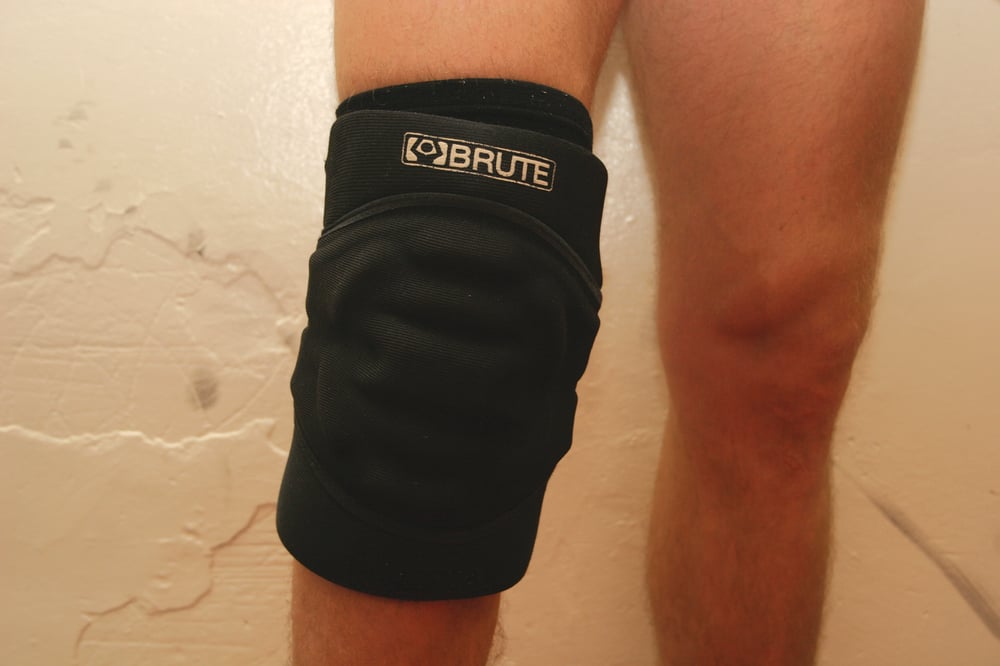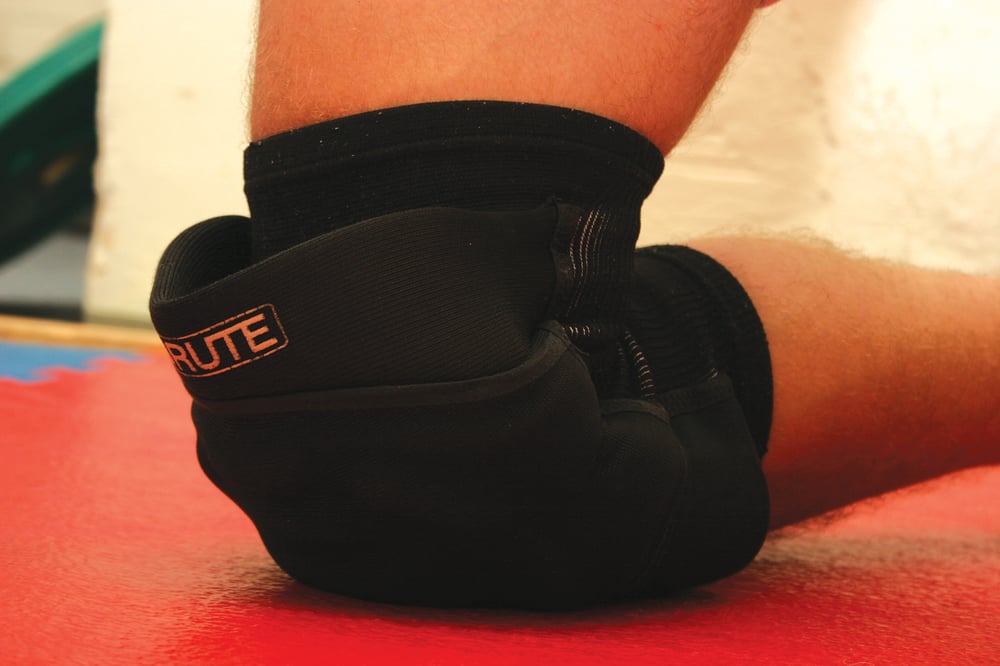
Issue 043
November 2008
Why Use Them?
To protect your knees while training for wrestling or grappling. Bursitis (sometimes known as ‘housemaid’s knee’) is a common injury in MMA, and can make kneeling down extremely painful. Kneepads can help to avoid this, or to reduce the pain and prevent it getting worse if you already have problems.
When Would You Use Them?
Some people like to wear kneepads all the time in training, others only wear them when they are having problems. Fighters are most likely to wear them when training wrestling. Some competition rules will allow competitors to wear kneepads, while others don’t. If in doubt, it’s always best to check in advance.
Key Features
Design
Kneepads consist of a sleeve that fits round your leg, with padding that covers the front of the knee. For contact sports, they must have no hard materials (unlike skateboarding kneepads, for example).
Materials
Kneepads are made from a variety of materials. Many have a neoprene sleeve, ensuring a tight fit and little for an opponent to grab hold of. Others are made from elasticated fabric, making them easier to get on and off but leaving more chance of them coming off in a scramble. The tighter-fitting sleeve is generally better for MMA, providing it isn’t too tight.
Padding
The amount and type of padding varies enormously, with various types of foam and gel being used in different combinations. This will come down to personal preference. Mixed martial artists will opt for different amounts of padding depending on how easily they tend to get problems with their knees, and how much impact they subject them to. You want the lightest, least bulky pair you can get away with.
Size
Don’t guess – especially if you’re ordering online. Get a tape measure out. Better still, get the measurement after you’ve done some training, because a kneepad that fits well when you’re in the shop could easily be far too tight once you’ve warmed up and you’ve got the blood flowing. There isn’t much that’s more frustrating than knee pads that are just slightly the wrong size; you want them snug, but not so snug that your toes turn blue. If your kneepads start to be uncomfortable after 15 minutes of training, try a larger size.
Wash your kneepads regularly
Some brands claim to make their kneepads from material that has anti-microbial properties. This may be true, but we have yet to find a pair that don’t start to smell after several weeks in a sweaty training bag. Nor do you want things growing on them (or growing on you after wearing them). Follow the cleaning instructions that come with your kneepads. To avoid spreading skin infections, don’t share kneepads with your training partners without washing them first.
Not to be confused with....
Knee supports. These may look similar, but don’t provide as much padding and impact protection. Likewise, although some kneepads may provide some support to the joint itself, that isn’t what they’re designed for.
Always wanted to know...
Top tips for your knees...
Some knee problems (such as those resulting from an accident) can’t be prevented. But many knee problems can be prevented by doing the following:
Warm up before playing sports. Walking and stretching are good warm-up exercises. Stretching the muscles in the front and the back of the thighs is a good way to warm up the knees.
Make the leg muscles strong by doing certain exercises (for example, walking up stairs, riding a stationary bicycle, or working out with weights).
Avoid sudden changes in the intensity of exercise.
Increase the force or duration of activity slowly.
Wear shoes that fit and are in good condition.
Maintain a healthy weight. Extra weight puts pressure on the knees.














